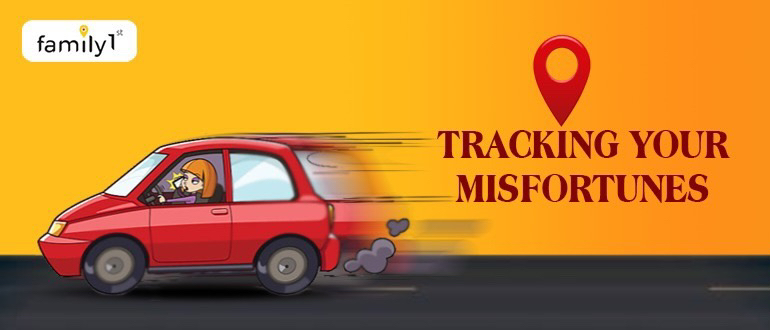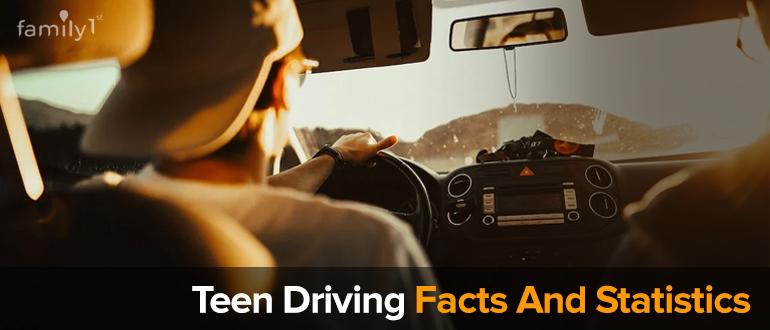Key Takeaways
- Teen safety requires a mix of open communication, clear rules, and emotional support to guide their daily choices.
- Most teen driving risks come from inexperience, distraction, rule-breaking, and driving under the influence.
- Setting curfews, limiting passengers, and banning phone use can lower your teen’s chances of an accident.
- Using a GPS tracker like Family1st helps you monitor your teen’s driving behavior in real time without invading their space.
Table of Contents
Why Is Teen Safety Important?
Teen safety matters because the teenage years come with big changes. Teens go through emotional ups and downs, face pressure from friends, and want more independence. Without the right support, they can make choices that put them in danger.
The CDC reports that car accidents, suicide, and drug use are major causes of teen deaths. Being online adds more risks. Teens face threats like cyberbullying and identity theft. They need proper guidance to stay safe while they grow and explore new experiences.
How to Ensure Teen Safety: 10 Proven Strategies
Raising a teenager means balancing their freedom with the right amount of guidance. These 10 simple and practical tips will help you protect your teen and build a stronger connection with them.
1. Talk Openly and Often
Make time every day to talk with your teen about school, friends, and how they feel. Listen without judging or turning it into a lecture.
2. Teach Online Safety Basics
Help your teen understand why sharing personal information online is risky. Show them how to keep their accounts private and report anything suspicious.
3. Stay Involved with Social Media
Check in on how your teen uses social media and talk about what they see online. Use simple tools to manage screen time and block harmful content.
4. Teach Personal Safety Skills
Talk about what to do if something feels unsafe, whether they’re out with friends or alone. Teaching simple self-defense moves can help them feel more confident.
5. Set Rules for Safe Driving
Make clear rules about no texting, no speeding, and always wearing a seatbelt. If your teen just started driving, limit nighttime trips and who can ride with them.
6. Create a Family Tech Agreement
Write down clear rules for using phones, gaming, and screen time. Let your teen help set the rules so they feel involved and take them seriously.
7. Talk About Peer Pressure and Drugs
Explain how to say no when someone offers them drugs or alcohol. Practice real-life situations together so they know what to say and do.
8. Watch Their Mental Health
Look for changes like mood swings, staying alone, or sleeping too much. Encourage them to talk or express feelings through writing, drawing, or music.
9. Set Curfews and Share Locations
Agree on a curfew that works for both of you and stick to it. Use location-sharing apps to know where they are without being too controlling.
10. Be a Good Example
Show safe habits like not using your phone while driving or managing stress in a calm way. Teens copy what they see, not just what they’re told.
What Increases the Risk to Teen Safety?
- Excessive screen time: Disrupts sleep and emotional balance, leading to stress and poor focus.
- Unmonitored friendships: Increases the risk of peer pressure and unsafe decisions.
- Lack of boundaries: Encourages rule-breaking and risky behavior due to unclear limits.
- Mental health neglect: Raises the chance of emotional breakdowns and social withdrawal.
- Low self-esteem: Makes teens easier targets for bullies and online predators.
- Unsafe driving: Leads to serious accidents due to inexperience, distractions, or reckless habits.
What Puts Teen Drivers at Even More Risk?
Teen drivers face high accident risks due to several specific factors. These issues directly impact their ability to drive safely and respond to challenges on the road.
Lack of Experience
Teens often make critical driving mistakes because they lack real-world experience. They are less likely to anticipate road hazards, react to sudden changes, or handle complex driving situations confidently.
Ignoring Safety Rules
Many teens break basic safety rules like wearing seatbelts or obeying traffic signals. This behavior increases the chances of serious injury during accidents.
Mobile Phone Distraction
Using phones while driving is a major cause of crashes. Texting, calling, or checking social media takes their eyes off the road and leads to delayed reactions. Phone usage causes around 12% of fatal teen car crashes.
Driving Under the Influence
Despite legal restrictions, some teens drive after drinking or using drugs. Aprox. 24% of teens killed in crashes were under the influence and not wearing seatbelts. Marijuana is the second most common substance after alcohol that causes impaired driving.
How Can You Prevent Your Teen from Getting Involved in an Accident?
Teen drivers face higher risks than adults due to inexperience and impulsive behavior. However, there are clear steps you can take to lower those risks and help your teen stay safe behind the wheel—without making them feel overly controlled.
Promote Focused and Sober Driving
Teach your teen that driving requires full attention and a clear mind. Driving under the influence of alcohol, drugs, or even while feeling drowsy increases the risk of fatal accidents. Make sure they understand how small mistakes on the road can lead to serious consequences.
Set and Agree on Curfews
Work together to set a curfew that feels fair to both of you. Driving at night is more dangerous due to lower visibility and increased chances of encountering impaired drivers. Talking through the reasons behind curfews builds trust and encourages cooperation.
Ban Phone Use While Driving
Make it clear that texting, calling, or using social media while driving is dangerous. Using a phone even for a few seconds can reduce reaction time and cause crashes. Remind them that a notification can wait—but road signals won’t.
Reinforce Basic Safety Habits
Go over the basics regularly, like wearing seat belts, following speed limits, and obeying traffic signals. These habits must be automatic. Choose a safe vehicle with strong crash-test ratings to give your teen extra protection while driving.
Limit Passengers Until They’re Ready
Avoid letting your teen drive friends around in the beginning. Friends can distract the driver or pressure them to take risks. Once your teen gains more experience and shows responsibility, allow limited trips with close friends.
Use a GPS Tracker for Peace of Mind
Install a GPS tracker in your teen’s car to monitor their location, speed, and driving behavior in real time. Many trackers allow you to set speed alerts and geofences so you’re instantly notified if something unusual happens. This adds an extra layer of safety without being invasive.
Family1st GPS trackers for teens and children
Family1st Portable GPS Tracker lets you track your teen’s real-time location with pinpoint accuracy. You can see exactly where they are, whether they’re at school, heading to a friend’s house, or driving on the highway.
This tracker fits easily in a car or backpack and works non-stop for up to 14 days without needing a recharge. It sends instant alerts if your teen speeds, leaves a set area, or drives outside allowed zones.
Using the app, you can review your teen’s driving history, check routes, and monitor habits. This helps you guide their driving behavior without being intrusive, keeping them safe and you informed.









Next
Previous